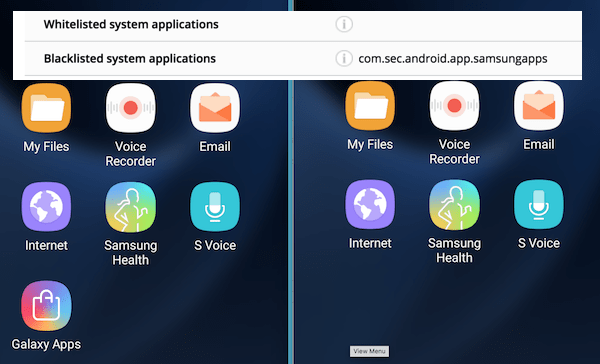Excellent Facts For Selecting Credit Card Apps
Wiki Article
How Do I Determine If My Credit Card Has Been Reported Stolen In The Usa?
Follow these steps: 1. Contact your credit card issuer.
Contact the customer service phone number that is located on the back of the credit card.
Inform the representative that want to verify the status of your credit card, and whether it was reported stolen or lost.
Verification might require you to supply specific information about yourself, including the number on your credit card and name.
Make sure you have an online account
Log in to your online banking or credit card account associated with the card in question.
Keep an eye out for any notifications or alerts related to the status of card.
Check recent transactions in order to spot any suspicious or illegal activity.
Keep an eye on Your Credit Report
Obtain a free copy of your credit report from each of the three major credit bureaus (Equifax, Experian, TransUnion) through AnnualCreditReport.com.
Review your credit report to determine if there are any credit inquiries or accounts that you don't recognize. This could indicate fraud.
Security Freezes, Fraud Alerts and Other Measures
You may want to consider placing a credit freeze or a fraud warning on your report if identity theft or fraud is suspected.
A fraud alert informs lenders to take additional steps to confirm your identity prior to extending credit. A security freeze limits access to your credit history.
Be alert and report any Suspicious Activities
Monitor your statements for credit card transactions and notify the credit card company of any suspicious or unauthorised transactions.
Inform any suspicious cases to the Federal Trade Commission. You can also file a report with your local law enforcement agency.
By contacting your bank, looking up your account history online, monitoring the condition of your credit score, and remaining alert for any warning signs of fraudulent transactions, you can prevent fraudulent use of your credit card.

What Is The Meaning Of My Credit Cards Are Listed On A Blacklist?
Being on a Blacklist can limit the use of a card or transactions until an issue is addressed. The reasons behind a card being placed on the blacklist may differ and could include:
The suspicion of fraud - Blocking cards for security can be triggered by suspicious or unusual transactions which cause fraud detection software to be activated.
Security Issues. The card could be flagged if there are signs of potential compromise. For instance, an unauthorised access to the card or a breach of data related to the card, or unusual spending patterns.
Identity Verification Problems- Issues in proving the identity of the person who is using the card in transactions can result in the temporary suspension of the card, particularly when additional confirmation is required.
Card stolen or lost If the card holder has reported the card as lost or stolen, the issuing company might stop the card to prevent unauthorized use until a new card can be issued.
Suspicious Activity- Any activity or behavior associated with your card that is suspicious, such as several declined transactions, geographic abnormalities, or unusual spending patterns can trigger a temporary blocking.
A card that is listed on the blacklist could limit the ability of the holder to apply for credit, or to purchase purchases using the card. This could happen until the issuer of the card confirms the authenticity of the account, or addresses any concerns regarding security or fraud. Cardholders need to immediately contact their card issuer to report the issue and verify the transactions and resolve any security issues.

How Do Cybersecurity Experts Monitor Cyber-Attacks And Spot The Stolen Credit Card Data?
Cybersecurity experts use a variety of strategies, tools and methods to detect and monitor cyber-related threats, including stolen credit card information. Some of the common methods and methods include: Threat Intelligence Gathering-
To keep up-to-date with the latest security threats and vulnerabilities, gather information from multiple sources such as forums, threat intelligence feeds and monitoring of the dark web.
Network Monitoring and Intrusion Detection
Software and tools that monitor network traffic to spot suspicious activity, anomalies, or other indicators of unauthorized access.
Assessment of vulnerability and Penetration Testing-
Regularly conducting assessments to identify vulnerabilities in applications, systems or networks. Penetration Testing involves simulating attacks to identify vulnerabilities and assess your organization's security posture.
Security Information and Event Management -
Implementing SIEMs that combine log data and analyze it from different sources (such a firewalls servers and applications), in order to detect security incidents and react to them quickly.
Behavioral Analytics
Utilizing behavioral analysis to identify odd patterns or variations from normal user behavior within networks or systems, which could indicate a possible breach.
Threat Hunting
Through analyzing logs and other data from your systems, you can identify threats to your company's network.
Endpoint Security Solutions
Installing endpoint security tools (such as antivirus, anti-malware, and endpoint detection and response tools) to safeguard individuals' devices and their endpoints from malicious activities.
Encryption, Data Protection and Privacy-
Implementing encryption techniques to secure sensitive data, including credit card data during transport and at rest, in order to reduce the threat of data security breaches.
Incident Response & Forensics
To be able to respond quickly in the event of security breaches, an incident response planning is essential. Conducting forensic analysis to identify security breaches and identify their impact and cause.
Cybersecurity experts bring their experience with a deep knowledge of cyber-threats and regulations and best practices to recognize, limit, respond, and prevent cyber-threats, such as those involving credit card information. Cyber-attacks can be mitigated through a combination of constant surveillance, information about threats, as well as proactive security. See the most popular savastan for website recommendations.
